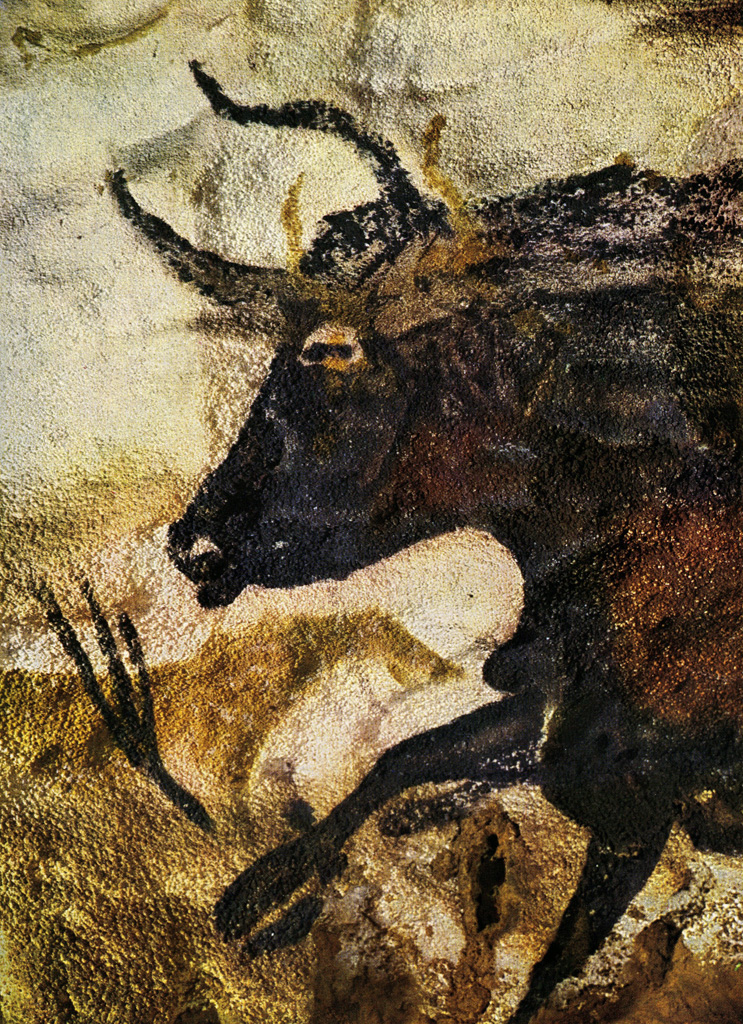The great painted
caves of the Paleolithic have been called the birthplace of art (Herzog
36). They have been likened to cathedrals and temples (Campbell-1, 58).
Archeologists now have had 100 years since the first discovery to theorize
what was going on in the minds of the people as they executed these great
works in the darkest, most difficult, secret and inaccessible locations.
From the beginning, their location seemed to indicate some kind of fertility
magic conjuring plentiful herds, or hunting magic facilitating a successful
hunt. However, more scientifically grounded archeologists found that the
animals depicted were not the same ones whose bones were dug up around
the campfires. The modern trend in cave art studies is towards the collection
of data and away from over-explaining, where theories derive from discoveries,
not parallels to modern hunting societies. While this is invaluable in
placing attention on the caves themselves, it does not produce a basic
explanation of motivation, anymore than finding a cross would tell the
story of Christianity. The paintings and numerous marks do mean something.
There is a mythology behind them, but without recourse to the stories,
it is not possible to know what message they contain. The best approach
to understanding the cave paintings is to study modern primitive hunting
societies, especially those that still practice rock painting, and piece
together from all sources what we know of the mythologies of the hunting
societies. This approach leads to a full consideration of what it meant
to live in the Ice Age totally dependent on and surrounded by animals,
with the daily requirement that they must be hunted, killed and eaten.
It also leads to a difficult area of speculation on the nature of human
consciousness and the natural abilities of humans to see visions. The
best current explanation for the painted caves is that they were an expression
of what anthropologists today call shamanic visions. These visions went
hand in hand with the mythological belief that animals have a sacred power
of life, and to draw an image of that animal was to share that power.
The animals they painted most often - the horse, the bull, the bison -
combined power and speed. The paleolithic artists painted in the dark
the revered animal spirits they saw in their mind.

Prehistoric Painting: Lascaux - or the Birth of Art, text by Georges Bataille, photos by Hans Hinz, Claudio Emmer. Albert Skira publisher, Switzerland, 1955.